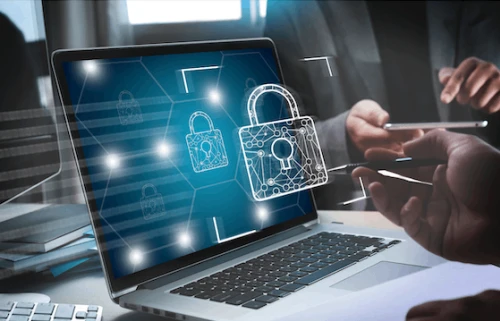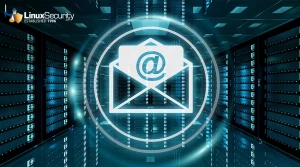The CIA Triad in Open Source Security for Linux Environments: A Primer for Professionals

The CIA triad — no relation to the Central Intelligence Agency — is an information security framework for protecting information. It examines the confidentiality, integrity, and availability of an organization’s data, giving users a valuable tool for assessing and implementing systems or finding weaknesses.
It’s particularly relevant to your open-source and Linux environments. Although Linux has comparatively fewer security vulnerabilities than Windows, some open-source projects are small, volunteer-led endeavors. That could make it easier to introduce vulnerabilities that go unnoticed before it’s too late.
No matter your company’s size or type, the CIA triad provides a methodical approach to evaluating your current data security approach and breach preparedness strategies. Learning about tools, tips, and best practices associated with this framework will give you the confidence to implement the CIA triad successfully in your Linux systems and guide others in doing the same.
In this article, you’ll also see how each triad component applies in the real world and what to do when overcoming specific challenges. They’ll help you compare what your company does now to how it should alter cybersecurity to meet each framework’s ideals. The associated preparedness reduces breach risks while minimizing the likelihood of other cybersecurity issues that could disrupt operations.
Confidentiality in Open-Source Linux Environments
 Confidentiality involves maintaining information’s privacy and ensuring only authorized parties can access it. A related aspect requires implementing appropriate safeguards to stop malicious individuals from stealing it. These preventive measures reduce breach likelihood and limit cybercriminals’ efforts once they obtain data.
Confidentiality involves maintaining information’s privacy and ensuring only authorized parties can access it. A related aspect requires implementing appropriate safeguards to stop malicious individuals from stealing it. These preventive measures reduce breach likelihood and limit cybercriminals’ efforts once they obtain data.
Methods such as multifactor authentication and the principle of least privilege also support confidentiality as defined in the CIA triad. In the first instance, people need more than passwords to access data and organizational resources. That way, stolen passwords or those leaked online are insufficient. Someone must also enter a piece of information only they have, such as a temporary code sent to their phones.
The principle of least privilege restricts what people can access, only allowing them to proceed if the data or another resource relates to their task or role. Those checks prevent someone from hacking an account and quickly escalating their privileges.
Linux users can ensure confidentiality through encryption by making the information indecipherable without the correct decryption key. This approach also works well in environments where the theft or loss of physical storage devices could compromise data confidentiality.
Are you looking for more encryption tools in your Linux environment, or are you ready to use them? Consider GnuPG, which lets you encrypt and sign your communications or implement a key-management strategy. You can rely on it to transfer files between devices securely or encrypt and sign sensitive documents stored in cloud services.
Alternatively, OpenSSL is a commercial-grade, feature-rich toolkit for secure communications and general-purpose cryptography. Try it when you need to generate self-signed certificates or want to work with symmetric key algorithms for encryption.
Since disk encryption is essential for data confidentiality, you need an open-source tool to handle it. One option is VeraCrypt, which creates a virtual encrypted disk inside a file and mounts it like a real one. The encryption occurs automatically and in real-time, supporting your workflow. Consider using VeraCrypt to encrypt a partition or your entire computer, protecting the files on it, as well as browser-based content.
Pre-Encryption Considerations
Although encryption improves data confidentiality, it also causes a slight but measurable performance decrease because of the extra step required for disk access. However, the effect is less noticeable when people only encrypt particular files or folders rather than their whole computers.
Additionally, encryption provides an unnecessary level of security for some settings. Consider the type of data you must protect and who accesses it before determining how and what to encrypt. Fortunately, the wide assortment of tools available — including those mentioned — makes it easy to find user-friendly options for your existing or anticipated needs.
Finally, assess whether privacy laws such as the General Data Protection Regulation (GDPR) or the Health Insurance Portability and Accountability Act (HIPAA) have influenced your decision to focus on encryption to improve data confidentiality. Such laws place increasing responsibilities on those who collect, store, or handle information, requiring them to keep it safe with appropriate cybersecurity measures.
Integrity in Open-Source Linux Environments
 Data integrity supports the accuracy and trustworthiness of information used throughout organizations. This CIA triad aspect is critical for executives who use business intelligence tools and other products to guide their decisions with up-to-date data.
Data integrity supports the accuracy and trustworthiness of information used throughout organizations. This CIA triad aspect is critical for executives who use business intelligence tools and other products to guide their decisions with up-to-date data.
Excellent data integrity also reassures customers that the company has robust processes for preventing accidental or malicious changes that could erode integrity and cause confusion. Many organizations develop methods to track changes, showing which party made them, when, and for what reasons.
Cryptographic hashing is one way for Linux users to maintain and ensure data integrity, especially since most distributions have built-in cryptography tools. This one-way method proves that no one changed the information in transit, which is helpful for communications such as email.
Secure hash algorithms (SHA) are the most widely used for data integrity and have three types. Besides relying on SHA for password storage and authentication, people use them to verify digital signatures. In this approach, the signer’s private key encrypts the hash, creating a document’s digital signature. Digital signatures are popular safeguards that show people have downloaded authentic software versions.
Version control systems (VCS) also support data integrity by providing all contributors and collaborators with unified and consistent views of a project’s data. Git is a popular VCS made in 2005 by developers working on Linux. It allows users to see a complete timeline of changes and information about a project’s progress. Businesses can use it to streamline communications and increase productivity, especially among users in various time zones.
Data Integrity Considerations
Secure hashing through SHA and other algorithms is slow by design, which affects data transfer speeds and can slow down your computer if the hashing requires significant overhead. However, since SHA speeds vary by string length, choosing the appropriate one for your hashing needs keeps speeds as high as possible.
Additionally, any good-quality hash should have collision resistance, meaning it’s incredibly challenging to find two hashes that produce the same output. Collision resistance stops file tampering and keeps passwords secure. Besides the increased security, one of the good things about SHA resource requirements is that the necessary storage space is only fractionally more than what the data itself takes up.
Before moving forward with a data integrity plan, consider the potential impact of standards such as ISO/IEC 27001. This international computer security standard has a significant data integrity aspect. This part of the CIA triad also supports non-repudiation, confirming information’s authenticity and origin while proving it was sent, when applicable.
Availability in Open Source Linux Environments
 The CIA triad’s third prong concerns whether the people who need to access data can do so without negatively impacting its confidentiality or integrity. Meeting this goal can be tricky because users may find availability competes with the other two parts of the triad, making it challenging to satisfy all three simultaneously.
The CIA triad’s third prong concerns whether the people who need to access data can do so without negatively impacting its confidentiality or integrity. Meeting this goal can be tricky because users may find availability competes with the other two parts of the triad, making it challenging to satisfy all three simultaneously.
Complications also arise when addressing the data availability needs of various groups, such as customers or employees. However, when people can smoothly access information as needed, their productivity and overall perception of the company will rise.
You can prioritize high availability with a redundant array of independent disk (RAID) configurations. They support data availability by combining several physical hard or solid-state drives into one logical unit. Although some focus on speed, others improve fault tolerance. You must select the most appropriate options for your organization, but Linux offers several integrated tools for configuring and managing RAID arrays.
Implementing failover solutions is another essential part of upholding data availability within the CIA triad. Companies can switch automatically and seamlessly to backup systems when outages occur. That capability supports business continuity during and after cyberattacks. Since data breaches cost an average of $3.9 million, reducing damages is imperative.
What Tools and Patch Management Strategies Support Data Availability?
Expand your Linux toolbox of failover solutions by using open-source products. Consider Pacemaker, which allows recovery from machine and application-level failures and can detect if they occur. The company behind Pacemaker also offers Corosync, an availability manager that automatically restarts failed application processes.
Robust patch management processes also support high data availability by decreasing the chances of cybercriminals exploiting known vulnerabilities. Consider the unattended upgrades feature within Debian and Ubuntu-based distributions as part of your strategy. Once activated, it keeps the machines updated without your manual input. Similarly, the yum-cron package allows scheduling when those automatic updates run. One popular option is to make it happen during every system start.
How Can I Implement Data Availability Strategies?
While developing your organization’s data availability use cases, always consider the information involved and who must access it. Getting stakeholder feedback regarding what they like and dislike about current strategies will help you keep what works and identify new ways to cope with the stated challenges. Consider applicable availability-related regulations, such as service level agreements, too. Ensure decisions align with your business continuity efforts and disaster recovery plans.
Decision-makers must also take a cost-versus-benefit approach with their redundancy and failover systems. Since it’s likely too expensive and demanding to create them for all of a company’s data, the practical approach is to consider which information would be most disruptive if lost or inaccessible.
Additionally, people must balance system performance and high availability, especially when using RAID configurations. Some prioritize speed, while others emphasize reliability. Options such as RAID 10 provide the best of both worlds.
Implementing the CIA Triad: A Holistic Approach
 Bringing the CIA triad into your existing Linux cybersecurity practices requires thoroughness and attentiveness to your company’s data, who uses it, and for what purposes. Use this best practices checklist for the best outcomes, referring to it along with the above suggestions:
Bringing the CIA triad into your existing Linux cybersecurity practices requires thoroughness and attentiveness to your company’s data, who uses it, and for what purposes. Use this best practices checklist for the best outcomes, referring to it along with the above suggestions:
- Ensure your robust encryption protocols cover data storage and transmission.
- Establish effective access control measures to keep information safe without limiting productivity.
- Perform detailed audits to compare your company’s status against the recommendations contained in reputable cybersecurity frameworks.
- Deploy digital signatures, hashing algorithms, and VSC to establish and maintain data integrity.
- Create and uphold systems for documenting changes and seeking the appropriate approval.
- Become familiar with built-in and third-party Linux tools that support the CIA triad.
- Hold regular employee training sessions to illustrate how workers can uphold the CIA triad.
- Understand the potential performance tradeoffs associated with some security measures and reach suitable compromises.
- Consider the internal and external factors that would necessitate updating how your company uses the CIA triad.
Further Challenges and Considerations of Using the CIA Triad in Linux Environments
The tradeoffs between security, performance, and usability require people to carefully consider their current needs and how they may change. This information will also help them set accurate expectations for how some of the CIA triad’s elements may slightly change workflows, such as causing small but noticeable slowdowns.
Informing workers about those potential performance decreases and the reasons behind them will encourage everyone to commit to the CIA triad’s principles despite encountering occasional downsides.
Although the evolving threat landscape poses perpetual cybersecurity challenges, the CIA triad’s key advantage is that it remains relevant despite those changes. Even when new risks arise, confidentiality, integrity, and availability will be necessary for data and those using it. Additionally, you can adapt the CIA triad as your organization grows or changes its focus.
Since Linux prioritizes open-source collaboration, it allows people to work faster to patch known vulnerabilities or update security tools to protect against new threats. Additionally, although open source is not always more secure, people find and flag problems faster, potentially resulting in less vulnerable systems and software.
Our Final Thoughts: The CIA Triad Will Remain Relevant
Even as company leaders hire more team members, acquire additional customers, or enter new market segments, they must maintain data confidentiality, integrity, and availability. The CIA triad maintains those aspects as organizations change and grow, ensuring they retain tight cybersecurity and follow best practices for Linux security.
The CIA triad is also an excellent way to keep a proactive security posture in the ever-changing open-source landscape and its associated cybersecurity threats. No matter your organization’s size or data, this framework supports better security preparedness now and for the foreseeable future.





















